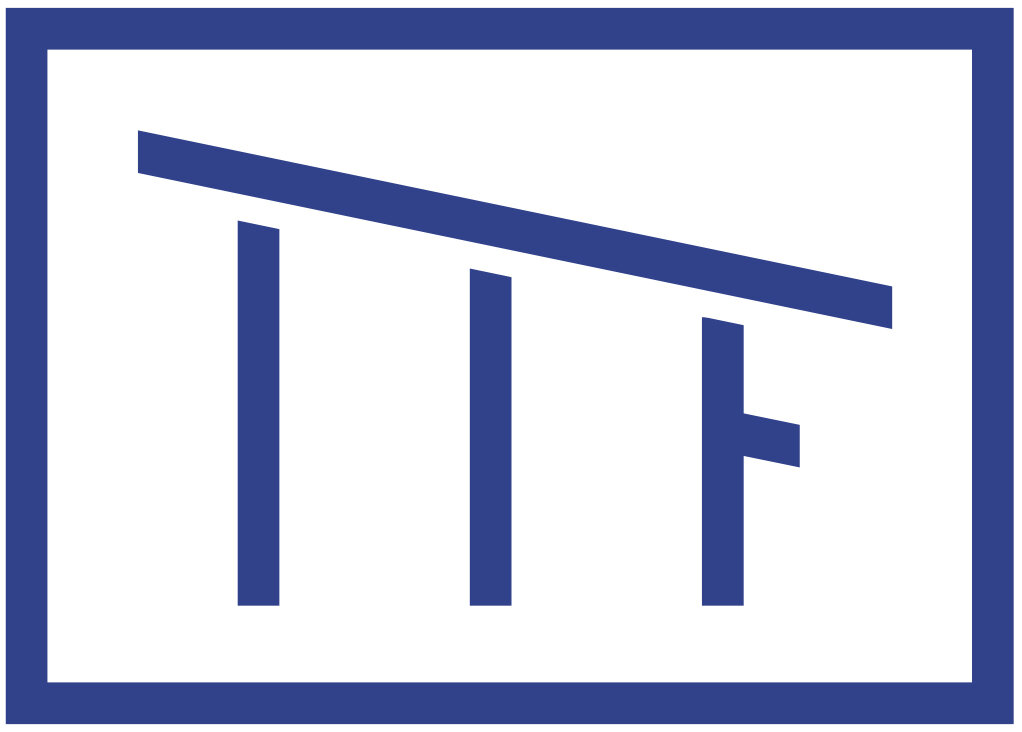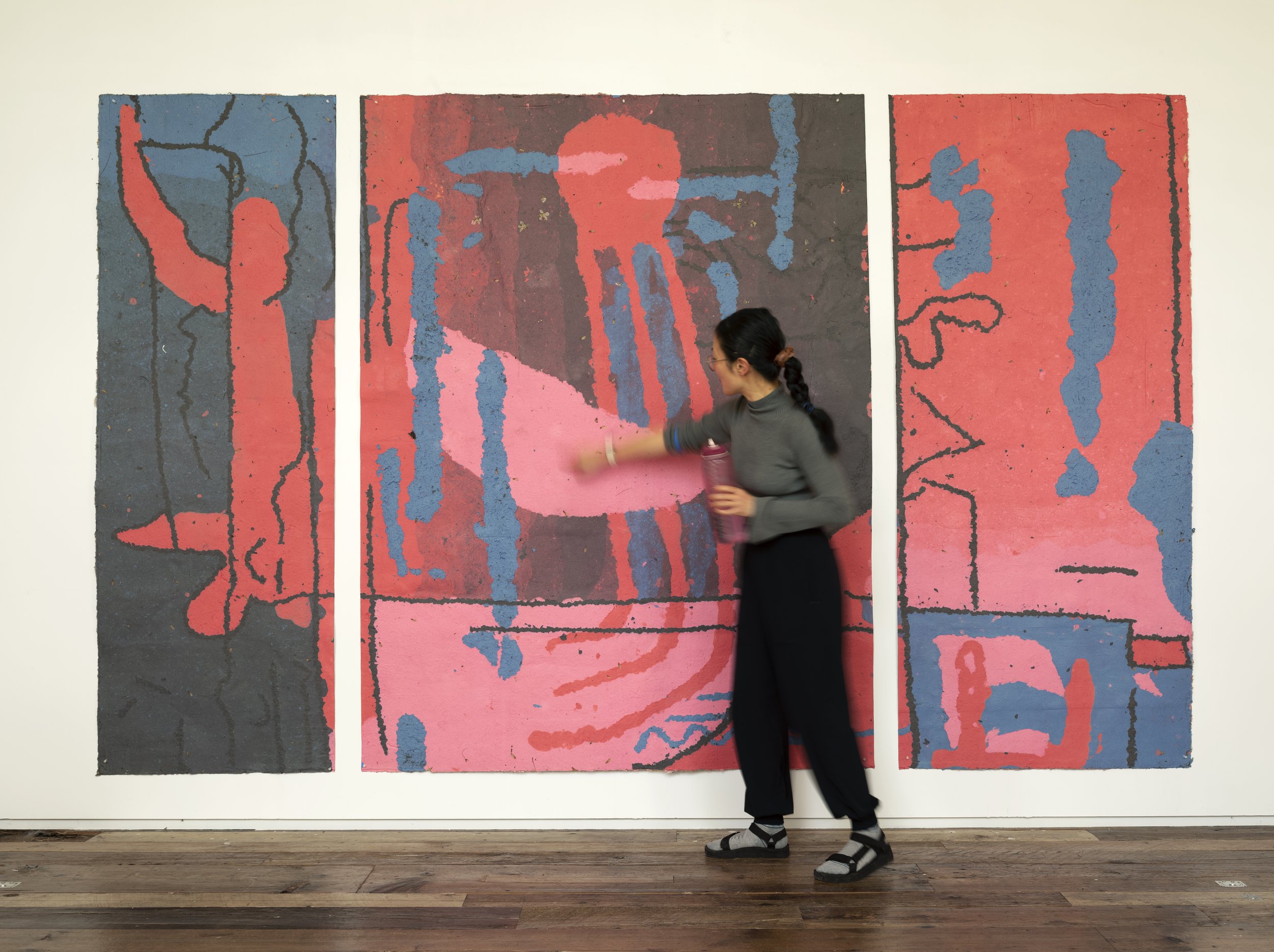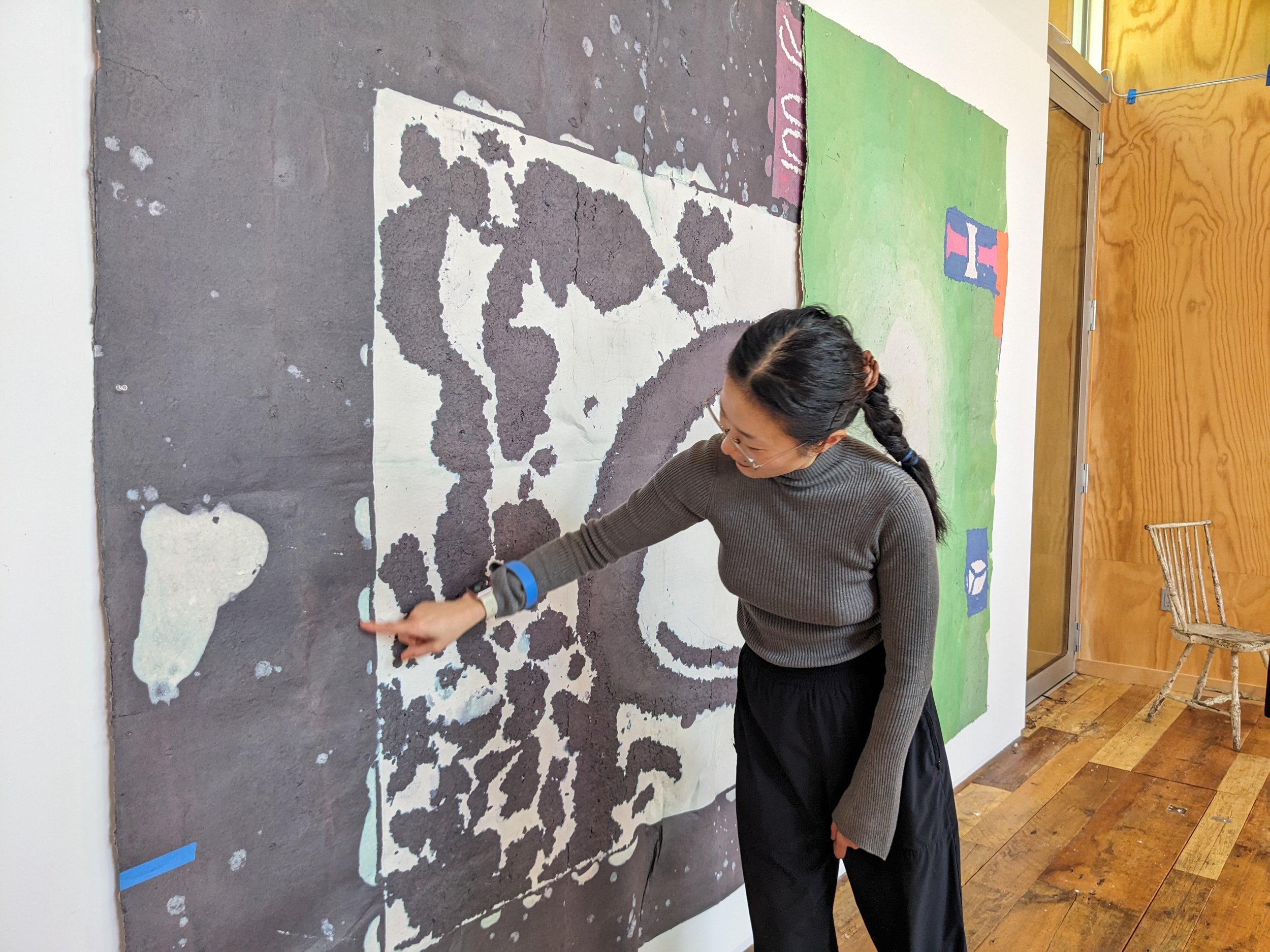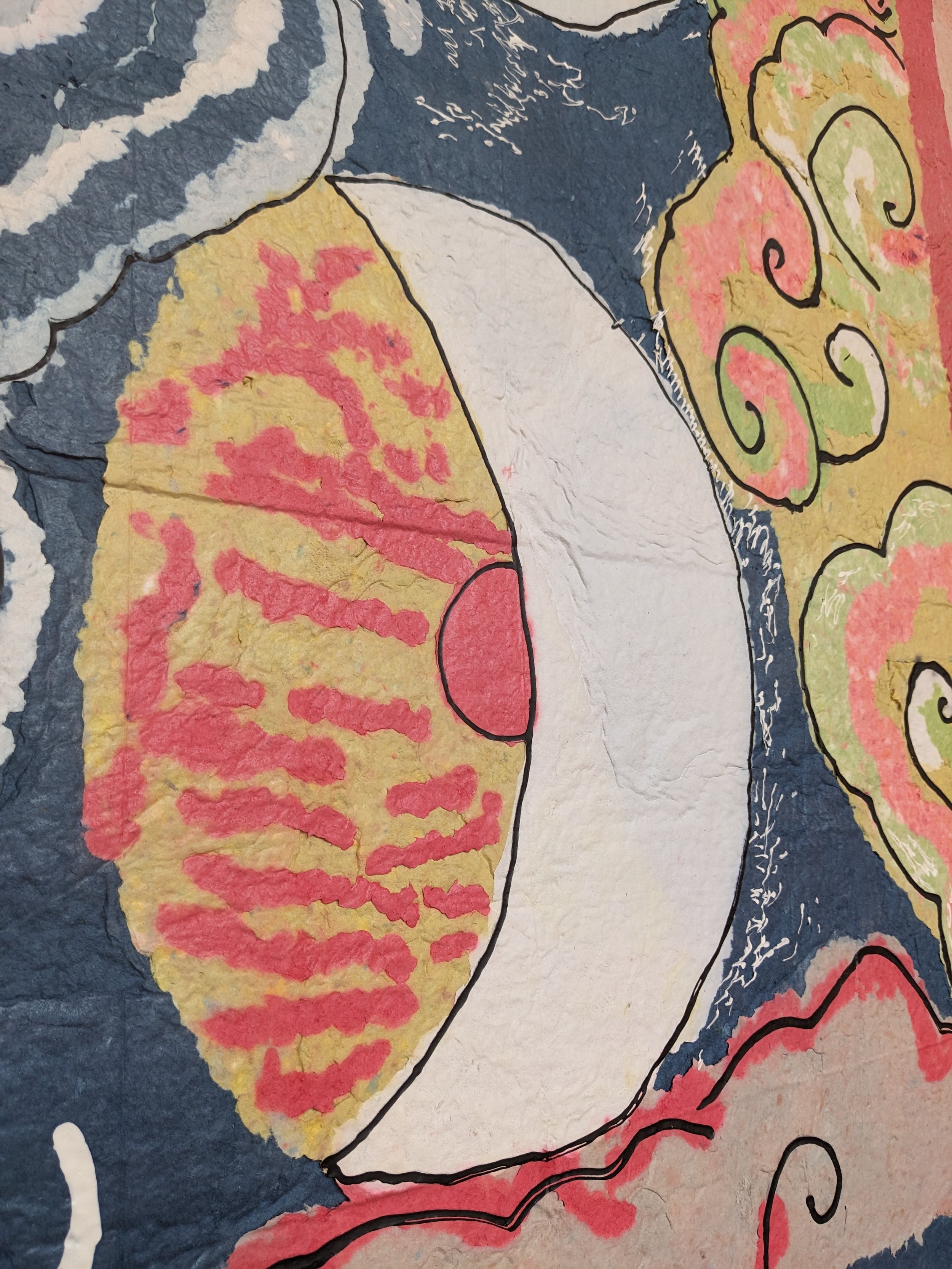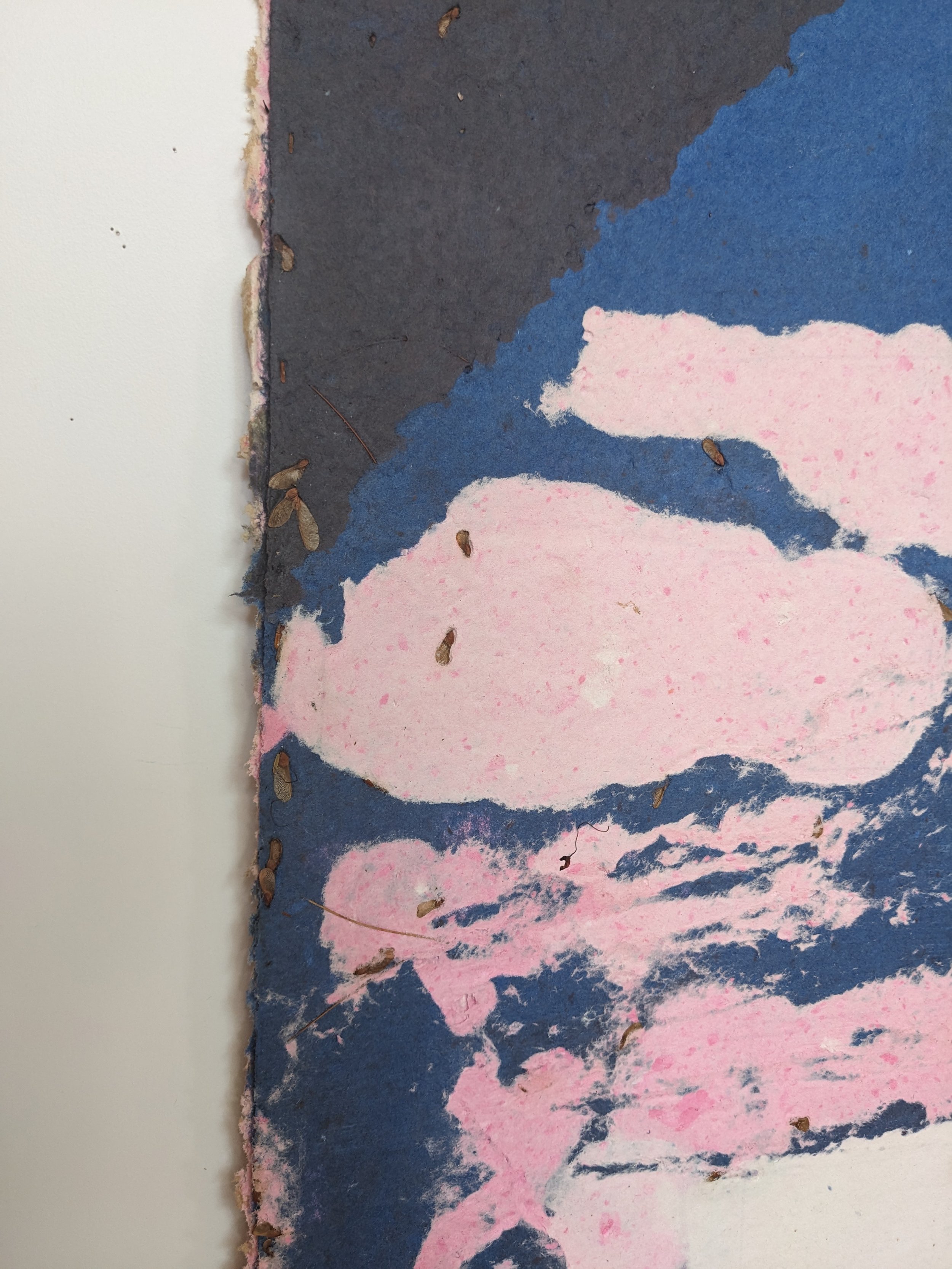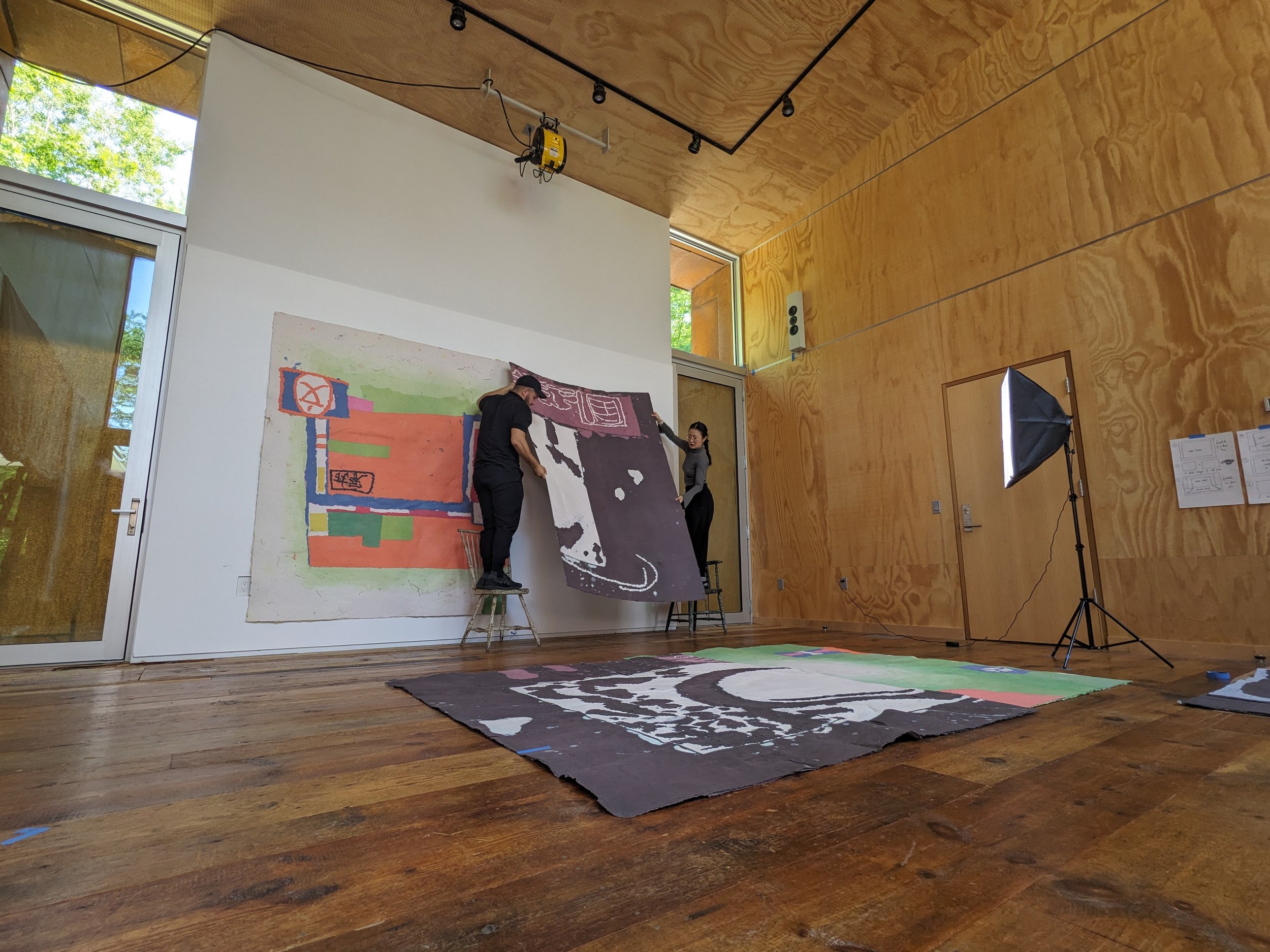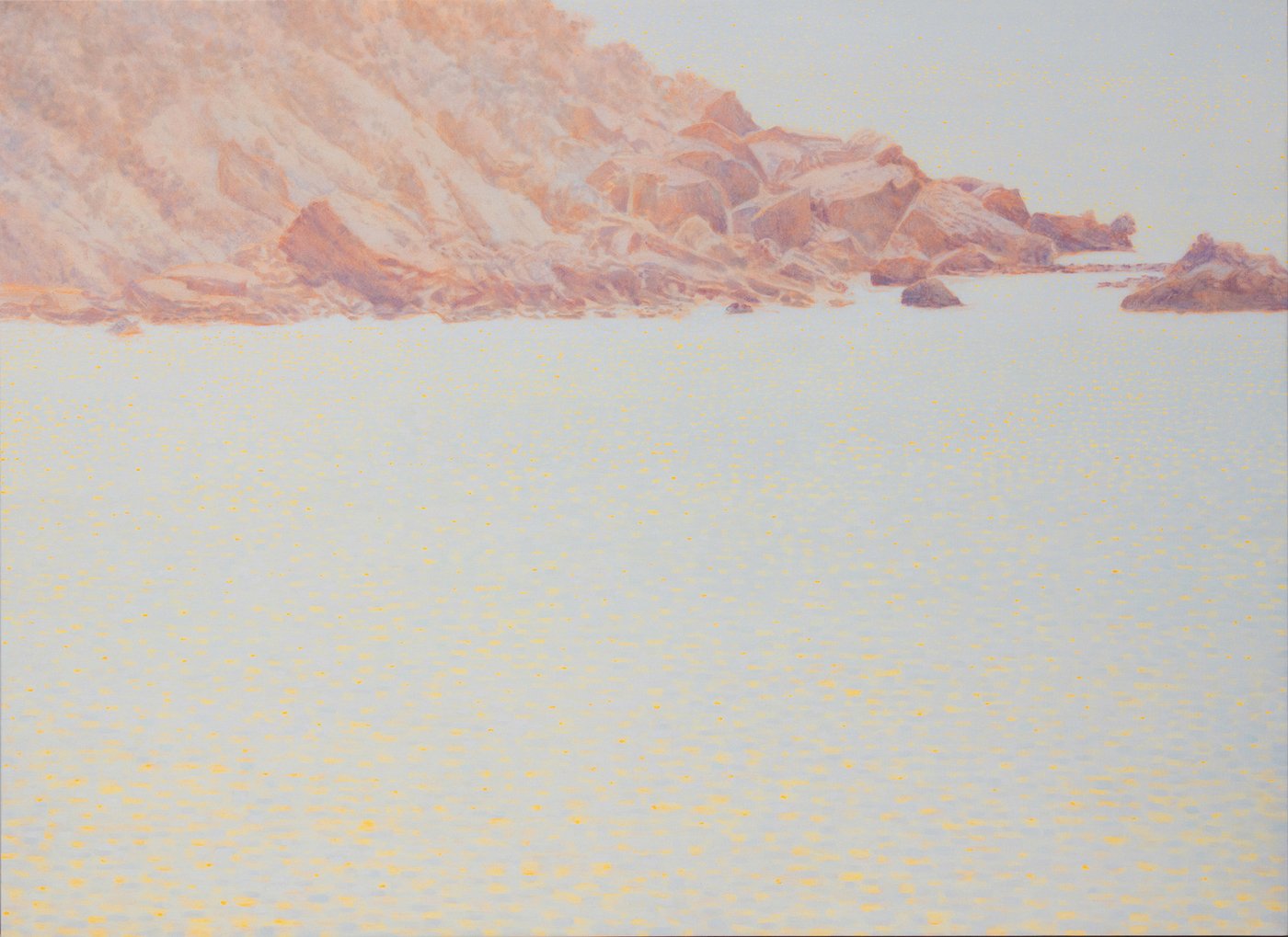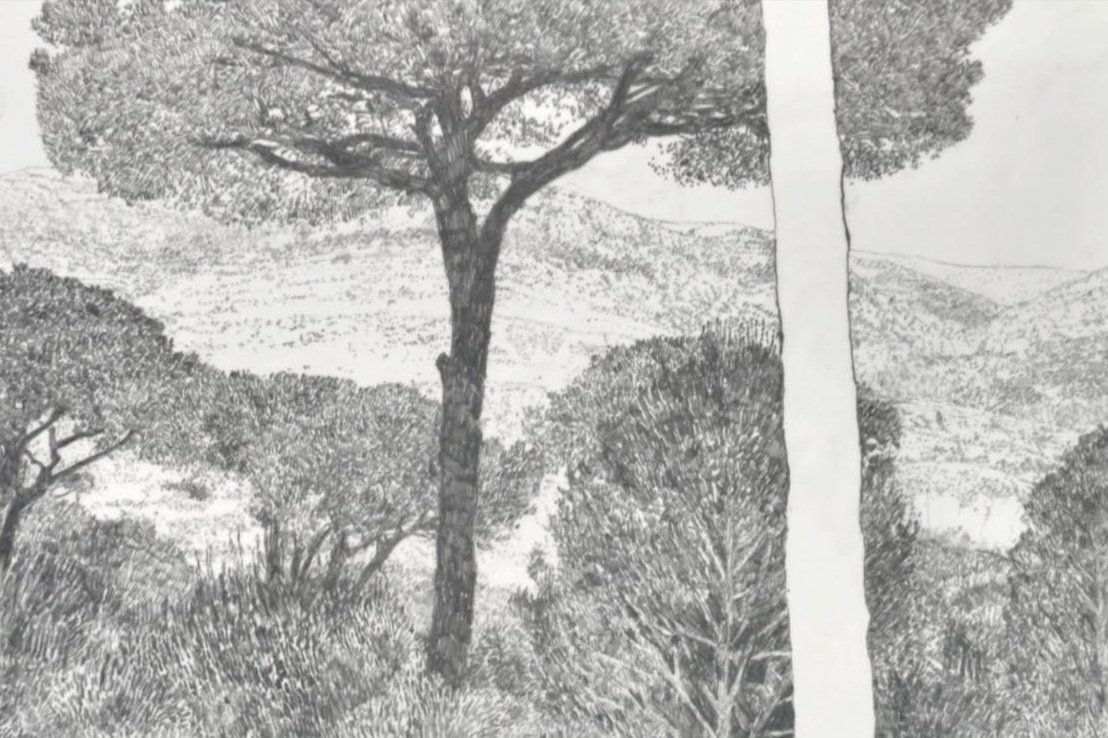Hong Hong
Born in Hefei, Anhui, China, Hong Hong earned her BFA from State University of New York at Potsdam and MFA from University of Georgia. Since 2015, she has traveled to faraway and distinct locations to create site-responsive, monumental paper-works. In this nomadic practice, ancestral methods of Chinese paper-making coalesce with painting, and monastic rituals. Recent projects map interstitial relationships between exile, landscape, time-passing, and the Chinese Diaspora through cartographic, symbolic, and material languages.
Hong’s work has been presented in solo and group exhibitions at numerous institutions across the US, including Sarasota Art Museum (Sarasota, FL), Real Art Ways (Hartford, CT), Crystal Bridges Museum of American Art (Bentonville, AR), Fitchburg Art Museum (Fitchburg, MA), Ortega Y Gasset Projects (New York, NY), Georgia Museum of Art (Athens, GA), NXTHVN (New Haven, CT), Tiger Strikes Asteroid (Los Angeles, CA), Lawndale Art Center (Houston, TX), Akron Art Museum (Akron, OH), Texas Asia Society (Houston, TX), and University of Texas at Dallas (Dallas, TX), among others. Her practice has received press and coverage in publications such as Art21, Art New England, Southwest Contemporary, Hyperallergic, Two Coats of Paint and Glasstire.
Hong is the recipient of a United States Artists Fellowship (2023), a Pollock-Krasner Foundation Grant (2023), a Carnegie Foundation Fellowship at MacDowell (2020), a Helen Frankenthaler Foundation Fellowship at Vermont Studio Center (2019), an Artistic Excellence Fellowship from the Connecticut Office of Arts (2019), and a Creation of New Work Grant from the Edward C. And Ann T. Roberts Foundation (2018 - 2019). She has also participated in residencies at Yaddo (2019), Houston Center for Contemporary Craft (2020 - 2021), McColl Center for Art + Innovation (2022), and I-Park (2018). She has been invited to lecture at the School of the Art Institute of Chicago, Cornell University, University of Oregon, Scripps College, SUNY Fredonia, Wellesley College, and University of Nevada at Las Vegas.
Hong recently joined the studio art program at Endicott College as an Assistant Professor. She lives and works in Massachusetts.
Installation view, Not Yet Heaven and Earth, Only Images without Form II, 2021, Mulberry bark, sun, dust, hair, pollen, pigment, repurposed paper, water and foliage, 94 (H) x 132 (W)”. Image courtesy of artist.
Hong Hong, finished work at Tusen Takk, June 2023. Image courtesy of artist.
Artist Statement
The inanimate is born the same way the animal is. Openness to touch is the first condition of their creation: mammals form inside a dark womb, while landscapes and objects are forged with heat and pressure. They retain this malleability throughout their existence. A sheet of paper and a boulder both accept and absorb gestures of tenderness, neglect and violence. Their porousness eventually leads to material instability and demise. In this way, all things continuously engage with the silent act of writing their own histories.
“As above, so below” is a phrase once used in esoteric alchemy and astrology. It refers to the idea that earth is the mirror image of God, or the astral plane. In numerous cultures, landscape is seen as an extension of a magical being’s body. In Chinese mythology, Pangu is a giant sleeping inside an egg. When he wakes up, he swings his axe to separate the sky from the earth. He holds up the sky for 18,000 years, pushing it away from land a few meters each day. After he dies, his breath becomes the wind; his voice, thunder; his thighs, hills; his left eye, the sun.
Pangu’s world is an emerging organism, one that simultaneously lives and erodes. In my work, material and process act as rigorous exercises in – and metaphors for – the formation and dissolution of postcolonial landscapes. I travel to distinct locations across the United States to create site-responsive, monumental paper-works. In this nomadic practice, traditional processes of Chinese paper-making coalesce with painting, feminist performances, and monastic rituals.
Each project begins with the inner bark of a mulberry tree, which is harvested before the first frost of the year. The bark is cooked with ash and hand-beaten using mallets. The softened bark is mixed with dyes and water sourced from local tributaries to form a gelatinous substance called pulp. Poured in successive layers and dried beneath the sun, pulp eventually becomes paper. These materials remain vulnerable to environmental variables as they cure, giving form to unfolding fluctuations within their surroundings.
The exterior pours stage collisions between primordial forces (sky/earth, interior/exterior, day/night), while the terrestrial journeys examine the symbolic qualities of land and the act of navigation. Soil, like newly formed paper, is a flexible body, whereas the sky seems to be a closed corridor between the known (earth) and the unknown (the universe). What is, then, the relationship between the horizontal, which manifests as a single swing of Pangu’s axe or a series of lateral movements across borders, and the vertical, which represents spiritual ascendance and the final collapse of Pangu’s body?
In recent work, the mulberry and the process of making paper from its bark are conduits for exile, divinity, migration and the Chinese diaspora. They also attempt to engage with nativity, Orientalism and the complex repercussions of colonization. The surface of the paper is a space where the sky, weather, the marrow of trees and my own hands can momentarily touch and intersect. Any object that directly depends on the spinning of the earth to fully form, contains some version of truth.
At Tusen Takk
During her residency at Tusen Takk, Hong set up a large-scale paper formation structure on the residency grounds, and she made paper outdoors whenever the weather allowed. After the paper dried, she brought sheets into the studios where she cut, arranged, and sewed multiple sheets into a new series of monumental installations and paintings. She also began a series of experimental investigations in text and textile, working with silk, voile, and embossment. Hong says:
Similar to my previous work, recent projects still consider time and site in relation to the body. But the body I’m interested in locating and describing is no longer my own. It's an abstract, malleable expanse where memory, ancestry, divinity, history, and place collide and intermingle.
Listen to an interview with Hong during her residency that aired on Interlochen Public Radio.
In-process environmental pour, Tusen Takk Foundation, Leland, MI, June 2023. Photo by the artist.
Hong in the painting studio at Tusen Takk with a finished work, July 2023. Photo by Tom Peckham.
Public Program
Related News
